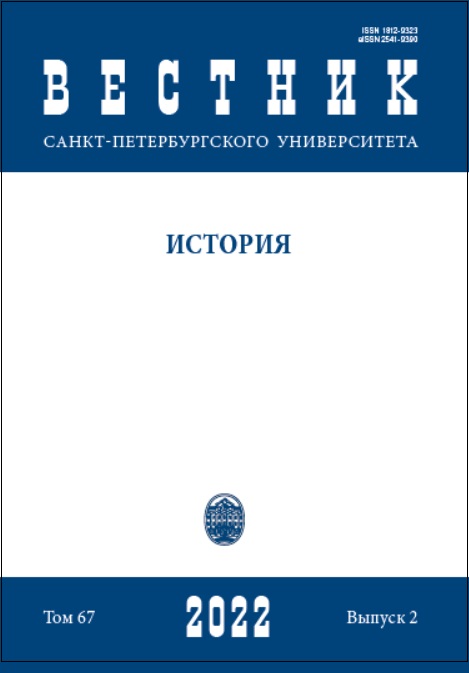Образовательная дифференциация российского дворянства елизаветинской эпохи
DOI:
https://doi.org/10.21638/11701/spbu02.2022.202Abstract
This article analyses the educational differentiation of the nobility during the reign of Elizabeth expressed in the status of their property (number of «souls»); the geographical location of their estates; the educational institutions where they were sent; and the age when they began education. It is based on a wide array of historical sources, among which archival records from the collections of the Russian State Archive of Ancient Acts. The data of registration of gentry were supplemented by materials from educational institutions (The Noble Land Cadet Corps, The Naval Cadet Corps, artillery and engineering schools, Gymnasium of Saint Petersburg Academy of Sciences). The article demonstrates the career achievements; establishes which schools gave a higher percentage of students who replenished the elite of the Russian Empire. The median value of the estate for all gentry was 20 souls, including those who did not have peasants. The poorest representatives of the «noble proletariat» were students of garrison schools, more than half of whom did not have peasants at all. The highest was the median value of serf-ownership among the students of the Noble Land Cadet Corps. Average and big noble landowners (owners of hundreds and thousands of «souls») studied in the Noble Land Cadet Corps. The percentage of generals from the families of major and middle-rank landowners was also the highest among graduates of the Noble Land Cadet Corps. The presented figures clearly show the preferences of different layers of nobility, their educational strategies, the results of their career advancement.
Keywords:
noble minors, nobility, landlords, serf-ownership, prosopography, general officers, Noble Land Cadet Corps
Downloads
References
References
Downloads
Published
How to Cite
Issue
Section
License
Articles of "Vestnik of Saint Petersburg University. History" are open access distributed under the terms of the License Agreement with Saint Petersburg State University, which permits to the authors unrestricted distribution and self-archiving free of charge.





